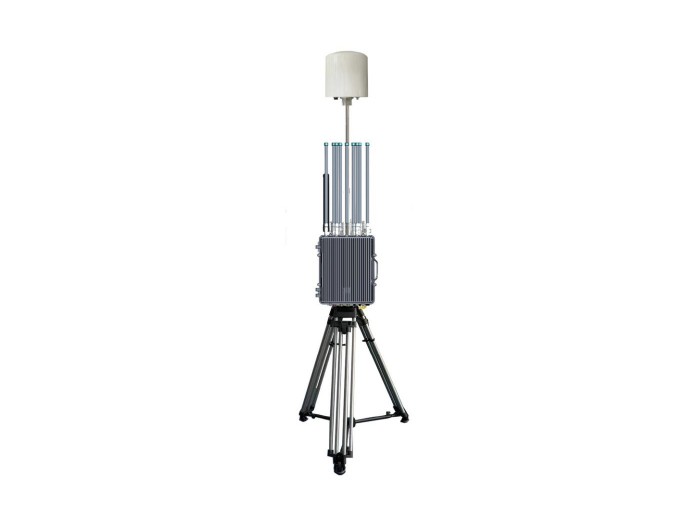Understanding Anti-UAV Jammers in Military Operations
In the realm of modern warfare, the proliferation of Unmanned Aerial Vehicles (UAVs) presents significant challenges to military operations. The need to effectively neutralize UAV threats has never been more critical. Imagine a scenario where a military base is under surveillance from hostile drones equipped with cameras and surveillance technology. Conventional interception strategies may fail, presenting a formidable challenge for military personnel tasked with protecting sensitive assets. This is where anti-UAV jammers come to the forefront of military strategy, offering vital solutions for safeguarding operations against potential threats from UAVs.
What are Anti-UAV Jammers?
Anti-UAV jammers are electronic warfare devices designed to disable the communication links between UAVs and their operators. By emitting radiofrequency signals, these jammers effectively disrupt the control signals that would otherwise allow drones to operate. According to the Department of Defense, the increased use of commercial off-the-shelf drones in tactical military environments has made anti-jamming technology an essential aspect of modern operational capabilities.
The deployment of such jamming technology can vary widely, from handheld units suitable for small tactical teams to large systems designed for base or perimeter defense. The ability to adapt anti-UAV jammers to different environments enhances their effectiveness, allowing military forces to maintain operational superiority against UAV threats.
Benefits of Implementing Anti-UAV Jammers
Implementing anti-UAV jammers provides numerous benefits, enhancing overall military agility and operational safety. Here are some key advantages:
- Neutralization of UAV Threats: The primary goal of anti-UAV jammers is to neutralize threats posed by drones effectively. This capability prevents hostile surveillance and disruptive actions, decreasing the risk of espionage and sabotage.
- Cost-Effective Solution: Compared to traditional military-grade interception systems, jammers offer a more cost-effective means of UAV countermeasure operations, leveraging technology that can be significantly less expensive while maintaining effectiveness.
- Versatility of Use: These devices can be employed across various military branches and situations, whether defending a fixed installation or enabling mobile troop units to adapt to dynamic environments.
- Reduced Collateral Damage: Jamming technology minimizes the risk of damaging surrounding infrastructure, unlike kinetic interception methods (e.g., missiles or bullets), making it suitable for urban environments where civilian casualties could arise.
Real-World Applications of Anti-UAV Jammers
Military organizations worldwide are increasingly integrating anti-UAV jammers into their defense strategies. For example, during recent military exercises, units equipped with portable anti-UAV jammers demonstrated successful disruption of enemy drone operations. Reports revealed a significant drop in the ability of adversarial units to gather intelligence using UAVs in live combat scenarios.
In addition to conventional military installations, anti-UAV jammers have found applications in peacekeeping missions and VIP protection details. The ability to shield high-profile personnel from aerial surveillance has underscored the importance of jammers. According to a report by Intelligence Squadron, a military branch successfully utilized anti-UAV jammers during a mission in a densely populated urban area, effectively protecting civilians while ensuring mission success.

Trends Shaping the Future of Anti-UAV Jammers
As military threats evolve, so too do the technologies designed to counter them. The anti-UAV jamming market is projected to grow significantly. According to industry analysis, the market for UAV countermeasure technology is expected to reach $1.5 billion by 2025. This growth is propelled by advancements in signal processing technology and increased awareness about UAV vulnerabilities.
Moreover, emerging trends in AI and machine learning are enhancing the sophistication of jamming systems. These technologies enable automatic detection and identification of UAVs, allowing rapid responses against threats with minimal human intervention. As military operations increasingly integrate automated solutions, enhanced anti-UAV jammers will likely lead the way in counter-drone defense strategies.
Key Takeaways and Recommendations
- Evaluate the integration of anti-UAV jammers into your military strategy to address UAV-related threats effectively.
- Invest in training personnel to utilize and operate anti-UAV jammers efficiently to maximize their potential.
- Monitor industry trends and technological advancements to stay ahead in anti-UAV capabilities.
- Consider cost-effective options that balance operational effectiveness with budgetary constraints.
- Contact us for a professional consultation on the latest anti-UAV jamming technologies suited for your specific operational needs.
Conclusion
Anti-UAV jammers play a pivotal role in enhancing military operational capabilities against an ever-evolving UAV threat landscape. Their ability to neutralize surveillance and control signals is indispensable, ensuring that military personnel can execute their missions effectively. As industry leaders in defense technology, we encourage you to explore our comprehensive range of anti-UAV solutions tailored to meet your unique requirements. Visit our website now to discover how we can support your military endeavors.
This HTML-formulated article contains an informative overview of anti-UAV jammers within military settings, addressing practical aspects useful for users while adhering to SEO guidelines.















